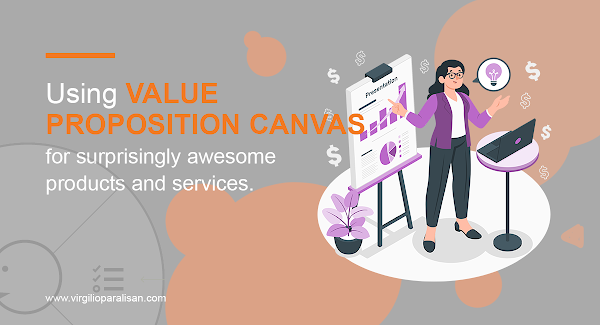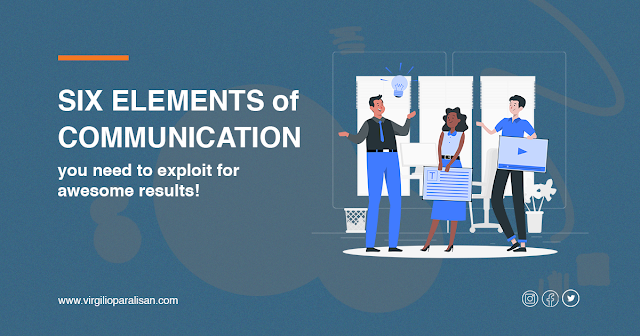Search This Blog

We help service enterprises in their growth phase with their organizational systems through focused coaching and consulting services on the following systems: leadership, communication, planning, resource management, operations, improvement & innovation, performance management, documentation, and risk management.
Featured
- Get link
- X
- Other Apps
Strategic Planning Workshop
Strategic planning should be seen in three (3) time frames: short, medium, and long-term. Short-term is a time frame that looks at 1 to 3 years of operation. Medium-term is 3 to 5 years while long-term is 5 to 10 years.
In the short-term, an enterprise should be looking at challenging the present strategy, evaluate how efforts are progressing, and explore options towards accelerating execution.
The enterprise should be focusing on the vision. How do you convert vision into value? New business models should be considered. We should be looking closely at what markets to prioritize, what partnerships to get into or what acquisitions to make. The enterprise must explore what innovation strategy or a new road map to follow.
What are Enterprise Founders Up to?
In this rapidly evolving business environment driven lately by global events like the pandemic and a possible land-based war in Europe, business owners have to assess their future directions. Already, fuel prices are increasing in Asia and the Pacific.
In the context of setting direction, you have to revisit the job you have to do as a founder or a decision-maker in an enterprise. In all likelihood, you will be…
- Identifying and understanding customers. Taking effort to know if their needs have changed or will they even continue their buying behavior.
- Identify or revisit the tools and resources supporting the key processes that deliver your value proposition.
- Identifying and revisiting your business models. Are the elements of the business model still relevant?
- Define or review our current value proposition? Are our products and services still relevant to our customers? Are the pains and desired gains of customers still the same? Have they changed?
- Understand what internal and external factors will be affecting the enterprise in the short, medium and long-term.
- Go through the exercise of knowing your competition
- Understanding the current trends of the industry where your enterprise belongs.
- Defining your vision-mission statement or revisiting your Vision-Mission if you have one.
- Defining our strategic goals or reviewing the current one.
- Defining activities/initiatives or reviewing previous ones.
- Measuring your enterprise performance/results against expectations.
- Initiating an inventory and understanding the key processes that deliver your value proposition.
- Conducting an inventory and understanding of the resources that support the key processes.
- Undertaking an inventory and review of the status of your relationship with your partners.
- Understanding and managing operating costs.
- Understanding and appreciation of your relationship with the customer
- Managing the channels that serves or communicates with the customer
- Identify, and select which customer to focus on
- Clear understanding of where the revenue and net profitability is coming from
The Painful Process of Strategic Planning
You may or may not be a believer of planning. Those who do believe in planning and undertake it on a regular basis have constant challenges in preparing for and actually conducting the strategic planning process.
Here’s a few of them that may be very familiar.
- Tools are available but not pervasive specifically in your enterprise. Some may not even have heard of frameworks like Balanced Scorecard.
- We don't know what tools are available and what we need to be good at planning.
- Stakeholders may not have understood the concept of business models.
- Some managers may not have an understanding of the concept of value proposition.
- There is the constant lack of timely data and not knowing what data is relevant even if it is available.
- The absence of competitive data and lack of ability to interpret this data.
- Not knowing where to get the data. Not knowing what data is relevant and how to translate data into meaningful insights.
- How to frame the Vision-Mission statements. The challenge of framing the Vision-Mission statement correctly.
- The constant query of how do you frame your goals correctly or even identify them.
- The difficulty of identifying what tools to use in measuring performance and what to measure.
- No documented records of key processes and best practices.
- No inventory and documented records of key resources.
- No documentation of touchpoints and/or interaction with Key Partners.
- Cost is not readily available in a form that can be understood by managers.
- No documentation of touchpoints and/or interaction with Customers.
- No data on channels to use and not using other channels except the conventional ones.
- No customer profile or customer persona.
- Income statement does not break down the sources of revenue. Income statement is not designed to measure financial performance.
The Great Expectations that Can Ease Your Pains About Planning
You have your own expectations about how strategic planning can serve your short and long term interests. We do understand that because we take our planning seriously.
And we do acknowledge your expectations about strategic planning, among them are:
- A list of frameworks and/or tools that you can use to make planning easier.
- A list of tools and resources that you need to support the strategic planning process.
- A visual representation of the company's business model to easily show what your business is about.
- A visual representation of how your value proposition responds to customer pains and their promised gains.
- A guide for identifying the internal and external factors affecting your enterprise.
- A well prepared market data and industry insights.
- Market insights with bibliographic listing of references.
- A guide for identifying the elements and the framing of the vision/mission statements.
- A list of goal statements using a planning and performance framework.
- A list of initiatives using a planning and performance framework.
- A list of commonly-used lag and lead performance measures.
- A guide for identifying relevant processes and representing them as flowcharts.
- A list of resources or assets assigned to a key process.
- To have easily-accessible and readily available data about interaction with your key partners.
- An accounting system that has a chart of accounts able to record cost accurately.
- A process-flow indicating the different touchpoints in the customer journey.
- A list of outlets and/or platforms through which the value proposition or your content is delivered.
- A narrative of the customer profile and the customer persona.
- A reviewed, approved, and enhanced account titles representing your sources of revenue.
The Desirable Outcomes You Ultimately Want to Gain
Ultimately your team should be capable of achieving the following after the strategic planning process:
- A database of prospects or leads.
- An inventory of tools, frameworks and assets actually being used to execute your processes.
- A value proposition canvas of your product and service.
- A business model canvas representing the company.
- Better understanding of your organization and the context in which you operate.
- Better understanding of your competition and supply chain
- Better understanding of your current market realities and industry conditions
- A clear and well-framed vision and mission statement.
- A well-framed goal statement of no more than three of each perspective of the balanced scorecard.
- A well-framed set of initiatives using the SWOT Matrix.
- Lead and Lag measures for each of the initiatives.
- A flowchart of key processes
- Inventory of assets directly supporting the delivery of the Value Proposition
- Updated information about Key Partners
- Updated Chart of Accounts
- A flowchart of the Customer Journey
- A summary of Products, Services & Content with the respective platform of delivery
- Updated Customer Profile & Customer Persona
- Updated Account Titles in the Income Statements
What We Can Help You Achieve
We help you achieve your strategic planning objectives through:
- A facilitated process to populate the Value Proposition Canvas
- A facilitated process to populate the Business Model Canvas
- A facilitated process for Competitive Analysis
- A facilitated process for identifying Strengths, Weaknesses, Opportunities, and Threats (External and Internal Factor Analysis)
- Market Information & Industry Insight organized in a slide presentation
- A facilitated process to properly articulate and frame Mission-Vision Statement
- A facilitated process to complete the Balance Scorecard
What to Expect from the Workshop
The facilitation process delivers specific outcomes. Depending on the quality of the contribution of the stakeholders participating in the process, the facilitation should have the following outcomes:
- Value Proposition Design
- Business Model Analysis
- Internal and External Assessment of your enterprise using McKinsey 7S, and PEST-LIED.
- Use of Michael Porter's 5 Forces.
- Research into Market & Industry
- Revisiting or Framing Your Mission-Vision
- The Balance Scorecard
Evidence of Service Completion
After the workshop, your team should be able to review and use as references the following:
- Pre-engagement Summary Report
- Completed Value Proposition Canvas and Business Model Canvas
- SWOT Matrix
- Competitive Profile
- Market & Industry Insights Presentation Slides
- An Approved and Validated Mission & Vision Statements
- Balanced Scorecard Matrix
The Strategic Planning Workshop will run for a duration of twenty-four (24) hours or three (3) consecutive working days.
A pre-work will be done to prepare for this three-day workshop which will be completed through a pre-engagement summary report in which a final program of activities will be recommended.
The client will be given a minimum of three (3) days to five (5) days to complete this pre-work. They will be preparing data and answering online questionnaires to help in making the facilitation process effective. The workshop itself will run for three (3) days.
The First Day
The first day we will focus on the team who will participate in the process and who will lead the execution of the strategy and operations. This will involve getting to know their strengths and their personality. It will entail revisiting, validating, framing or reframing the vision and mission.
The Second Day
The second day will focus on the appreciation of the internal factors constituting the enterprise. This covers articulating or validating your customer and your value proposition.
The team will appreciate and validate this value proposition in the context of the enterprise’s business model. After appreciating the enterprise’s internal factors, we will look into the external factors such as the competitive environment, the threats the enterprise is currently facing and what it anticipates to face in pursuing its strategy. We will then identify the opportunities available to the enterprise.
The Third Day
The last day will be focused on defining the team’s wildly important goals. It includes defining the team’s lag and lead measures. It will end with outlining the initiatives that will accomplish the strategic goals.
Note: Structure or program of activities may be altered depending on the result of the pre-engagement assessment. The program of activities shown above is the ideal structure for a strategic planning workshop. Focus will vary depending on what will best serve the identified opportunities.
Please go to the service pricing or investment summary for details of payments for the workshop facilitation.
- Get link
- X
- Other Apps
Popular Posts
Using Value Proposition Canvas For Surprisingly Awesome Products And Services
- Get link
- X
- Other Apps
The Six Elements of Communication You Need To Exploit For Awesome Results
- Get link
- X
- Other Apps



Comments
Post a Comment